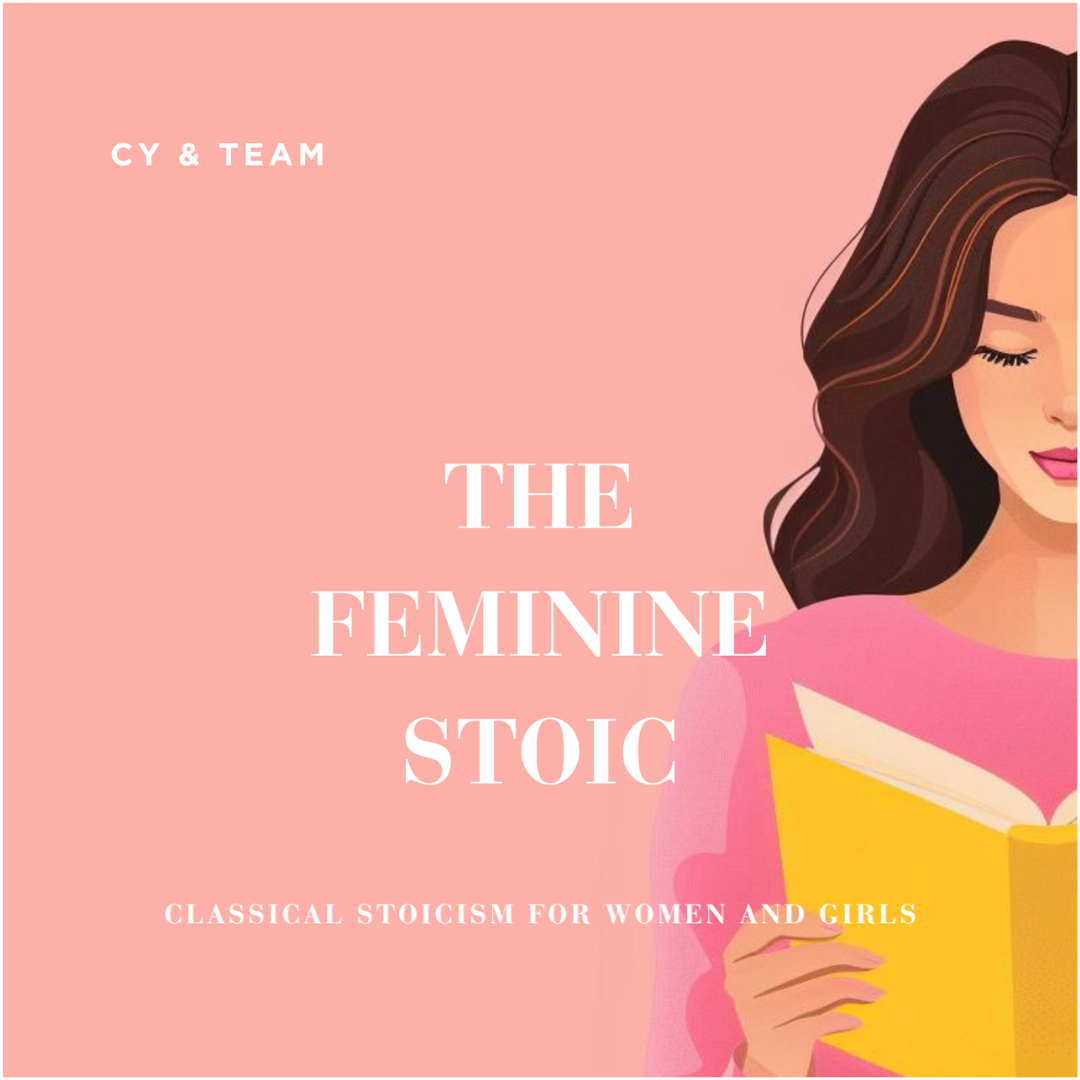The Peanuts Movie Carries on a Long Legacy
A legacy based on the comic strip for old and new fans of Peanuts.
Incluvie Foundation Gala - Learn More
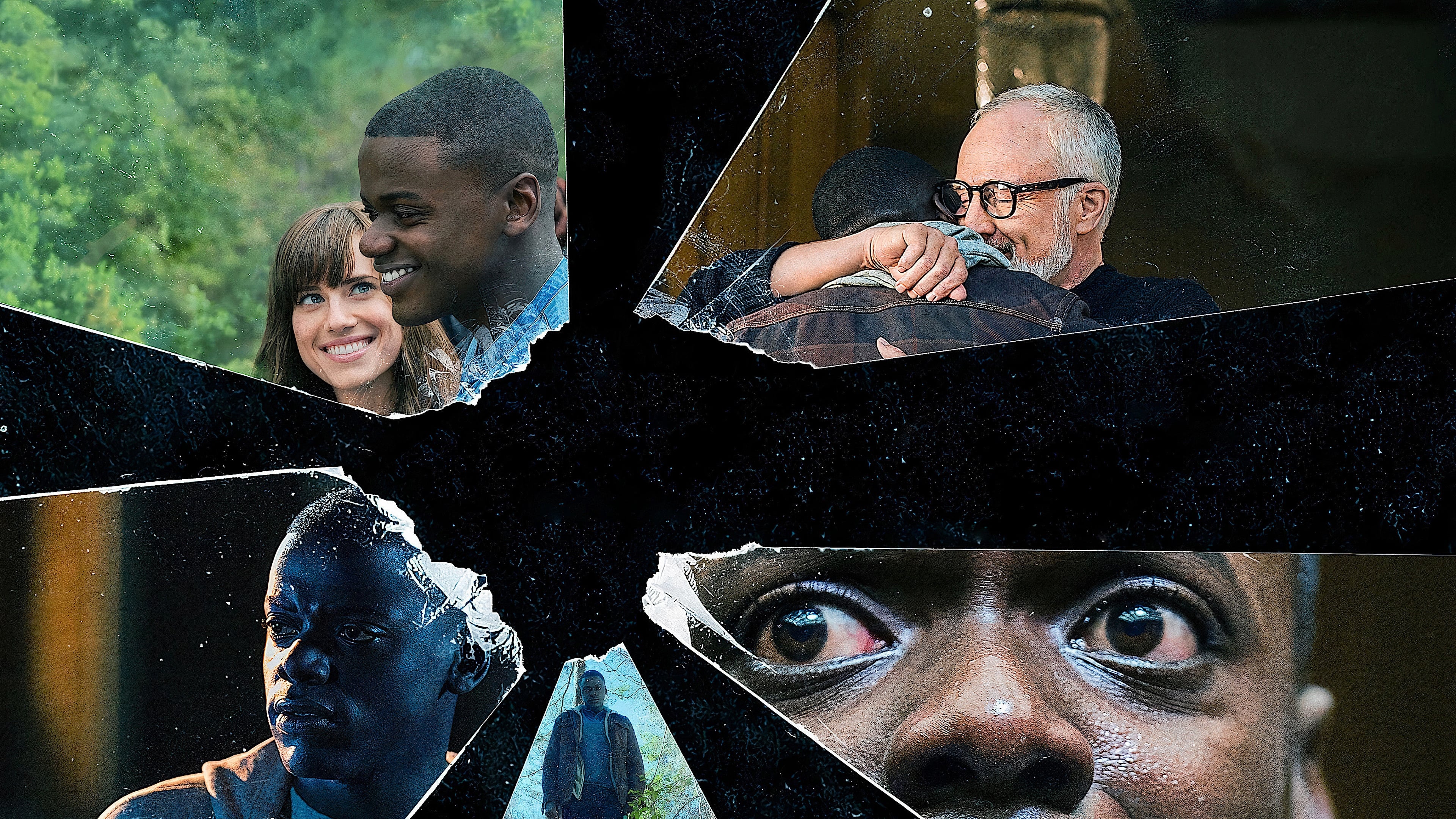

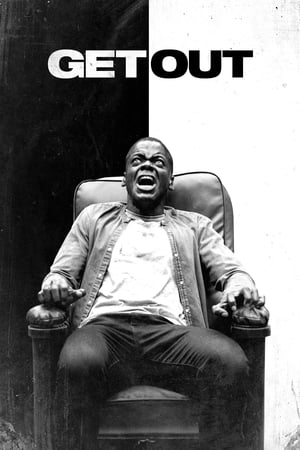




Originally published by Dillon McCarty for Incluvie on November 2, 2019.
The more and more I consume media, be it literature, theatre, television, etc., the more I’ve come to understand that art is a reactive medium. The narratives we see explored are a response to the world we inhabit and the conflicts we experience as a society. Because of this, even when a specific topic has been addressed previously, there are always nuances to be further excavated, always a new lens to peer through, to see aspects that have yet to be showcased onscreen. And with something as complex as racism and the stereotypical representation of “Blackness,” we are in need of as many interpretations as we can get to even begin to comprehend the full scope of this lived experience.
Enter Cord Jefferson’s sharp, hysterical, enlightening satire, American Fiction, which places an only-somewhat-exaggerated mirror in front of our 21st century society. Adapted from Percival Everett's book, Erasure, and boasting a cast of seasoned actors, each of whom has their own history of portraying the nuances to the Black experience, the film tells you what it is going to be from the first frame; and not only does it not disappoint, it proves to be even more wise, even more cunning than you could begin to imagine possible.
The Christmas horror subgenre is a growing section of horror that tends to play on the swept-away side of Christmas. It examines whose naughty, and how badly they deserve to be punished, often with comedy thrown in for extra good measure. If you are a fan of horror, especially horror comedies, this is the list for you! They are in no particular order.
*Warning movies may feature or discuss sexual assault. Those with sensitivities around this issue should proceed with caution for entry #2.
Described as Die Hard mixed with Home Alone, Violent Night is titled appropriately to set up audience expectations. A disgruntled Santa Claus decides that he has had with the predatory capitalism and consumerism that has besmirched his nominally jolly holiday. He decides to go on one last hedonistic sleigh ride, debating if this will be the last Christmas for humanity. Ending up at the mansion of the wealthy Lightstone family, he is suddenly thrust into an action thriller John Wick style, when armed mercenaries pick this night to break into the mansion and steal the purported hundreds of millions in the family vault. The youngest Lightstone, Trudy, pleads for Santa's help with a child's innocence, and Santa Claus reluctantly goes up against the bad guys. It is silly, action-packed, and has a comic twist on the idea of naughty or nice!
There has been a reckoning in the entertainment industry as of late, a call for more representation and inclusive storytelling that has led to films like Everything Everywhere All At Once and CODA finding greater box office success than they might have had a decade ago. In the midst of cries for justice and visibility, the intentionality of creatives and their work is becoming more crucial than ever before. And this intentionality begins with the storytellers themselves - writers. What better way to examine the state of the industry than by looking at the diversity programming at the Austin Film Festival, which has been deemed...
Every year at the end of October, the Austin Film Festival brings writers together for a week of films and panels, giving new storytellers a chance to learn from seasoned ones. The programmers bring in industry professionals from across the board - TV writers, producers, managers, playwrights, podcast hosts, indie filmmakers and, of course, lots of screenwriters. These experts range from staff writers with just a few years of experience under their belt to Oscar-nominated, even Oscar-winning artists. AFF is one of the few places where you can network laterally, getting acquainted with people who are just coming up at your level, and just happen to find yourself sitting in the same theater as Dustin Hoffman.
This was my eighth year attending the festival and I still have not gotten it down to a science because there is so much to keep up with over the course of the week. Due to the abundance of programing, there are often blocks where I have to decide between three different panels that I’d like to attend. A good problem to have, for sure. Thus, while I cannot give an exhaustive review of the entire event, I would like to highlight a few of the panels and films I attended that spoke to the importance of diverse storytelling.
That was the longest Black Mirror episode ever.
Don’t Worry Darling’s media circus was definitely attention-getting, drawing in everyone online like moths to a flame. However, the movie itself isn’t quite as engaging. Don't Worry Darling follows 1950s housewife Alice (Florence Pugh) as she discovers that her perfect world and her perfect husband, Jack (Harry Styles), aren’t what they seem. The highlights of this film were the big twist reveal and the performances from Florence Pugh, Chris Pine, and Gemma Chan. The coloring is bright and eye-catching, as are the costumes and makeup. The idea at the heart of the screenplay is strong, but the writing and directing falter in executing it. And while the other actors give amazing performances, it becomes increasingly clear over the course of the movie that Harry Styles can’t pull his weight. Spoilers ahead.
Let’s get into the Harry Styles dilemma first, since he is undoubtedly one of the biggest selling points for this movie. Styles, unfortunately, flounders in a sea of A-list actors. In the first half of the movie, he does well playing the charismatic husband. But it’s the moments when the reality’s cracks begin to show, when the true darker nature of the real “Jack” is supposed to be slipping through, that he fails to deliver the nuances the character requires. Maybe if he had been acting opposite actors more of his caliber, but the thing is, he’s not. Styles is thrown in the deep end, surrounded by stars whose acting talent totally outshines him, making his performance come off worse while you’re watching than it may actually be.
At one point in my theater, we all began to laugh at him. For what, exactly, I can’t say. It happened when he’s screaming in the car after Alice has been taken, one of the most emotionally intense scenes in the movie (or at least, it’s supposed to be). And yet, there’s something about Styles that makes his attempts at acting out any darker emotion beyond basic lighthearted charm in vain.
LGBTQ+ conversion therapy is a sensitive subject matter, and for first-time director and three-time Academy Award-winning screenwriter John Logan, it’s a personal topic. However, They/Them, which is a passion project he wrote during the lockdown and subsequently directed, loses some of its prominence because it’s made as a slasher. That is not a general statement, however, because as Vince A. Liaguno observes here:
So what about They/Them being a slasher film makes it not as compelling as it could be? Before I get into that, I want to make an observation about the conversion therapy films I personally love and the various tones they adopted.
The first that comes to mind is the RuPaul and Natasha Lyonne starrer But I’m a Cheerleader. It came out 22 years ago and is still one of the most openly confrontational and relevant works against conversion therapy. However, it delivers the commentary through comedy. Anyone with a taste for dark jokes will fall in love with the light-heartedness with which the film deals with the grim reality of conversion therapy. Another much more recent film is The Miseducation of Cameron Post directed by Desiree Akhavan. It’s an intense coming-of-age drama that chooses to dwell on the terrifying nature of conversion therapy and culminates in a climax that feels like a much needed breath after a series of tortuous exercises at the hands of bigots. The film Boy Erased also falls in the same sub-genre of drama. Finally, there’s the documentary format. Pray Away was released last year and is a documentary about the infamous Exodus International. It’s absolutely heartbreaking.
There are other films too, some comic, some dramatic, some documentaries, but I haven’t seen any conversion therapy films which are also slashers, which is strange, given the slasher film’s formulaic approach in the 80’s of being set in campsites. Think Sleepaway Camp, Friday the 13, Madman, among others. So, when They/Them was announced, I was really excited to watch it the moment it came out, pun intended. It’s also Kevin Bacon’s return to the slasher genre. However, after watching it, They/Them falls short because it’s a slasher and here’s why I think that is:
The highly anticipated next film by Jordan Peele, Nope, starring Keke Palmer, Daniel Kaluuya, Brandon Perea, and Steven Yuen, is finally here and is simultaneously precisely what you might expect from his films and a new, fresh take on the first contact narrative while possessing an identity of its own. The horror elements of Peele's previous films are still present but are significantly toned down and instead focus on spectacle and visuals. While this isn't to say that Nope is devoid of substance, of which there is plenty, it is his most straightforward work to date narratively speaking. Peele takes us on a journey through the exploration of human instinct and the consequences that can arise from taking advantage of said instinct - morbid curiosity. More specifically, profiteering off the trauma of others or yourself and capitalizing on people's natural curiosity and gravitation toward tragedy.
There is an incredibly traumatic moment in Ricky's (Steven Yuen) life when on the set of a '90s sitcom he was starring in as a child, Gordy's Home, centering around a chimpanzee named Gordy, he witnessed the chimpanzee become crazed, brutally killing nearly the entire cast of the show apart from Ricky. Ricky and Gordy would eventually begin to share a tender moment only to be interrupted by Gordy getting gunned down just before they embrace. But we don't get this entire story right away. The film revisits this day a multitude of times throughout, uncovering more information each time and it can be quite jarring the first couple of times we're shown this incident. But as the film goes on, it's shown that Ricky has been actually charging people to visit a museum he created featuring memorabilia from the show as it has become incredibly popular due to this tragedy.
But this museum of his own experience isn't the only traumatic opportunism Ricky seeks to exploit. He has since created a theme park based on a UFO that has also recently been discovered by Oj (Daniel Kaluuya) and Emerald (Keke Palmer) Haywood after a series of inexplicable events take place at their horse ranch, even killing their father in an attack months prior. Ricky has seemingly been aware of this mysterious object for some time and had been purchasing horses from the Haywoods to offer it as a sacrifice for the main spectacle at the park, only to finally agitate the object and cause not only himself but the entirety of the audience to be abducted and ultimately killed, bringing Ricky full circle and receiving a self-fulfilling fate that he just narrowly escaped as a child. But Ricky's insistence on combining spectacle and trauma isn't exclusive to him, the sentiment is even shared to a degree with Oj and Emerald. Their main goal throughout the film is to capture indisputable evidence of the UFO to sell for an enormous sum of money, while less shady, they are not innocent of this impulse. Having all three of these characters related to the media industry is no coincidence. It's to personify our trauma-profiteering obsessed culture and the media that perpetuates it. Peele taps into and explores our twisted sense of curiosity and offers a critique of human behavior.
When you think of the horror genre, the LGBTQ+ community is probably one of the last things you think of. After all, most of the genre is dominated by cishet people who have movies filled with promiscuous women, American-Dream families, and heroic men. However, horror is much more queer-coded than you may think.
Several novels could be made about the homoerotic subtexts in horror, but for our purposes, know this: horror is ultimately fueled by otherness. We're scared of things that are different. That ghost is from a mysterious dimension? Scary. That man is hiding in the alleyways? Frightful. Does that monster have scales and horns? Terrifying. If someone is acting differently from societal norms or looks different than everyone else, people become uneasy. As a long discriminated group seen as "strange" for the past several decades, it's easy to see why the genre is important to LGBTQ+ culture. Many in the Drag community have even claimed Halloween as "Gay Christmas". Despite this, horror has still mainly been strictly heterosexual... until now. We are currently in a boom of fantastic LGBTQ-led horror films, and you deserve to know about it!
So, without further delay, here are 8 modern LGBTQ+ horror movies that you need on your list!
The Season 1 finale of Severance aired recently and Apple TV already picked up the series for a second season. The final episode delivered, one hundred percent. We’re left with our main character Mark (Adam Scott) running to tell his sister a crucial discovery he has made, before returning back to his severed self, or ‘innie.’
Severance is truly captivating and original. It succeeds at combining dramatic elements with a bit of humor and satire while enthralling audiences with all the makings of a psychological thriller. We are with this eclectic cast of characters at Luman Industries, figuring out things as they go along. Just what’s around that next office hallway corner is anyone’s guess. The possibilities are endless. Much like the plot, the odd mix of characters are filled with layers of mystery and intrigue.
All of the characters in Severance function with some level of detachment. Not only literally, as most Luman employees lead a work life mentally cut off from everyday existence, but also metaphorically as each of the characters are somewhat lost and incapable of expressing their emotions. As if the job produces a dull, limited engagement not only with their work but with themselves.
Mark’s ‘outtie’ lives in a generic residential community. He’s typically moving about in darkness, a stylistic choice that emphasizes Mark’s loneliness. I like this bit of world-building. I believe it’s one of the stronger aspects of the show. The sparse, wintery setting makes me want to curl up under a blanket and get comfy and cozy.
Innie life is the exact opposite. Cold, white, bland phosphorescence practically bleaches the space and everyone in it, a clever metaphor for the sort of brainwashing these characters must deal with every day.
Mariama Diallo’s directorial debut Master is a haunting exploration of White Supremacism and institutionalized racial “insurance” to be found in seemingly progressive policies. The genre she’s chosen to talk about the targeting of students and teachers of colour by the white people on campus is horror and it plays out perfectly. The first thing that came to my mind when I read about it and even more so after watching, is Jordan Peele’s Get Out. That was another bold directorial debut about White Supremacism which used horror to drive the point home. I’ll discuss the thematic parallels and the differences in execution later in details. I brought it up because it’s a prime example of how horror often says what drama can’t because it works even in the spaces when drama doesn’t exist since the horror elements are atmospheric rather than verbal or visual.
Master follows freshman Jasmine Moore (Zoe Renee) and newly appointed master of Belleville House at Ancaster College, Gail Bishop (Regina Hall) as they have strange and often extreme experiences during their time at the college. Ancaster College is predominantly white, and this is abundantly clarified by the staff and the students. The college is very proud of the first ever black house master and the director and other house masters keep stressing about how this is a major step ahead, including making a joke about how they could call her “Barack”. If that sounds harmless, one must realize one wouldn’t call any potential presidential candidate, Lincoln or Kennedy. It’s very obvious that Ancaster is literally interested in coming across as progressive and inclusive than being actually inclusive. The lack of diversity sensitization amongst the characters brings me to that conclusion.
The only other black professor on campus is Liv Beckman (Amber Gray) and she becomes a source of solace for Gail. She is also however very clear on the lack of sensitization but also painfully passive. She doesn’t seem to be exhausted of her life but she’s very obviously come to terms with the fact that her place is not one to bring about change but to do her best by her students within the confined space she’s provided. It’s interesting that there’s no malice anywhere and all the professors are respected, but Gail is basically a prized possession to the board rather than a source of meaningful contribution. No one profiles her but they unnecessarily congratulate her or acknowledge her very differently than they do their white colleagues.
And this is essentially profiling too because it’s about different treatment whether the treatment is in the form of positivity or negativity. And I think this is a very important inclusion in the traits of the people in Ancaster’s board because often this subtle racism is not understood to be racism since it’s special treatment, but being constantly reminded that you’re “other” is not special, it’s discrimination! In fact, the opposite is Jasmine’s story. She’s once profiled against by none other than Liv who claims it’s understandable that Jasmine will have problems adjusting to the new school because she’s different and comes from… The sentence stays incomplete because Jasmine interrupts her to clarify she’s from Tacoma and this is definitely a problematic way of being addressed. The juxtaposition of Gail and Jasmine’s stories actually help clarify for the audience that whether done through politeness or through insult, racism is racism.
The horror element is introduced gradually into the story and apart from a nightmare, there is barely anything visually horrifying in the first half of the film. There’s a myth about a witch Margaret Millet who died nearby after standing trial for being a witch and then burnt. There’s a rumour running amongst the students that every year, a freshman is picked off by Margaret to be killed. And on top of that, Jasmine and her roommate Amber (Talia Ryder) share a room whose occupant from the 60s killed herself. Jasmine’s research reveals she was the first black student of Ancaster College and since that moment the malice starts rearing its ugly head. Again, it’s rather subtle as opposed to the horrendous stories like those of Brianna Taylor or George Floyd, may their souls rest in peace. For example, the black woman who serves lunch is very amicable with the students but treats Jasmine rudely, and the librarian pushes her boundaries after the exit gate beeps when she passes through it, which is a recurring thing for her despite no discrepancies in the library paperwork.
The definition of the word foul is “offensive to the senses,” which is a pretty good summation of the new Disney+ film, Artemis Fowl. This was one of the many movies Disney had set to come out in 2020 prior to COVID-19 shutting down the movie theaters. However, Artemis Fowl was the only movie Disney removed from their theatrical plans entirely, as they sent it directly to their Disney+ streaming service.
I have never read the Artemis Fowl books, nor do I really know anything about the story. I’d be curious to hear the opinion of someone who knows this property and whether or not the movie was in line with it.
That being said, I find this movie to be a trainwreck. The story is practically nonexistent, the acting is laughable, and the dialogue is horrendous. The visual effects are decent, as you would hope for a movie that cost Disney $125 million to make. Some reports say it could be even higher due to some reshoots.
I want to take a second and look at that number: $125 million: that is the same cost as over 31 Get Outs. That number isn’t even taking into consideration how much they spent on marketing the movie. By sending it directly to Disney+, there is no way Disney will be able to break even with this movie; a film that was clearly intended to start a brand new franchise. Unfortunately for them, Artemis Fowl is essentially dead upon arrival.
Artemis Fowl tells the story of Artemis Fowl, Jr. (Ferdia Shaw), a child prodigy who must embark on a journey when his father (Colin Farell) goes missing.
(Spoiler warning, trigger warning for violence against POC.)
In theme with both the recent end of Hispanic heritage month and the upcoming spooky season, let's discuss Madres! I absolutely admire the story the film wanted to tell—I only wish all pieces of the end result were polished. That is to say, the material covered in this movie is so incredibly important. It's criminal how overlooked the topic is! I want to like this movie more than I do for that alone. But, there are some elements that make it lackluster.
Initially, I found Diana and Beto charming; in the first few minutes I thought they had nice chemistry. Soon enough though, I found this not to be the case as much. They’re somewhat dry with each other at times, and there’s certain scenes where I felt like Beto was a bit too unsupportive of his wife. Take for example when in an argument he accuses her of being a “white savior”. Yes, he was frustrated at that moment, but it’s obvious that it hits a nerve for Diana to have her Hispanic identity delegitimized. For something she's shown to be sensitive about throughout the narrative, it felt like a low blow. On that note, that factor was what sort of appealed to me about her character. I know firsthand the sting of rejection by those in your cultural community because you don’t align with what’s typical, ergo being white passing, not speaking the language, etc. Other than that, neither character is all that engaging, which makes for lower stakes if you don’t feel invested in them.
In 1992, the original Candyman was released and subsequently became one of the most important Black horror films of all time. The story followed white graduate student Helen Lyle on her study into Cabrini-Green’s urban legend of Candyman. Candyman was the son of a slave who fell in love with a white woman. When she got pregnant, the woman’s father had Candyman lynched. The mob cut off his hand and replaced it with a hook, smeared his body in honeycomb so the bees stung him to death, and finally burned his body on his pyre. Helen discovered Candyman was real, and he wanted her to be his next victim. After framing her for various murders and kidnapping an infant, Candyman was destroyed by Helen (who turned out to be his reincarnated white lover), and thus was the end of the spirit.
Or so it seemed.
Candyman (2021) is a direct sequel to the first film and follows Anthony (Yahya Abdul-Mateen II) -- the infant Candyman kidnapped in the first film -- as an adult. He is now a struggling artist who just moved to the now gentrified Cabrini-Green with his partner, Brianna. The story follows him as he finds creative inspiration in the myth of Candyman. However, his art causes Candyman to appear again and murder anyone who says his name five times into a mirror. Anthony begins to descend into madness as he sees Candyman in his own reflection and begins to undergo a physical transformation into the spirit.
The directing of this film is spectacular. From the moment the movie begins, the atmosphere is unsettling, aided by a chilling score and slow, upside-down shots of the high-rises in the gentrified Cabrini-Green. There is no doubt that Nia DaCosta is going places. She is a brilliant mind, discussing at great length what this film means to her and why she chose to represent Black history and trauma the way she did. She is not allowing herself to be constrained to telling stories about Black pain either -- she is set to direct the Marvel blockbuster The Marvels, an amazing opportunity for an up-and-coming female director of color. The movie will also feature female superheroes of color, one of which will be played by Teyonah Paris.
Spoilers ahead for Free Guy
Free Guy, Disney’s new movie about a video game NPC who realizes he’s living in a video game, is a treat! Its base is classic Disney — a white heteronormative love story. But its toppings — Ryan Reynolds’ unique brand of adult humor, a commitment to exploring modern day video game culture, and tons of star cameos — make this movie fun to watch!
Free Guy’s main protagonists are all white, heteronormative characters, per usual. This story could have had so much potential for great representation if even one of the leads had been non-white. Yet again, POC are relegated to supporting roles. Guy’s best friend is Buddy (Lil Rey Howery), a fearful security guard. Howery is hilarious here, playing a very similar character to his role in Get Out. While he is great as comic relief, he also has one of the most touching moments in the movie when he gives a speech to Guy about how, even if they are fake, the moments they share together are real. Buddy should have been given more to do than serve as Guy’s motivator and fall into the black best friend trope.
Mouser (Utkarsh Ambudkar) is another comedic character and the friend to Keys (Joe Keery). Guy and Buddy and Keys and Mouser are meant to be parallels of each other since Keys himself created Guy, so that means we get two sets of white male protagonists and their POC best friends! However, Mouser seems much less like a best friend than Buddy. But Ambudkar does amazing in this role, and it was great to see him so soon after finishing season 2 of Never Have I Ever where he played the cool teacher. He also should have been given more to do than act as Antoine’s lackey and Keys’ friend. We don’t even see too much of him being Keys’ friend anyway, making his line “Keys is my boy,” feel a bit cheap, but the movie unfortunately isn’t interested in giving him much depth beyond that.
Horror Noire: A History of Black Horror moves chronologically through Black representation in horror films, as told and viewed by Black filmmakers and actors in this genre. I think it is important that the perspective is given solely to Black actors and filmmakers and is not counterpointed or discussed with White people. This film is about the Black experience as it relates to Black horror films. This is important for two reasons — #1 It will give non-Black viewers some perspective on the Black experience in representation or lack thereof; #2 As mentioned by Rachel True (actor in The Craft), sometimes the racism is so normalized in America (even to people of color) that its presence is often ignored. We all need to acknowledge the history of representation so positive change occurs.
Because of laziness, I will be abbreviating Horror Noire: A History of Black Horror as HN:HBH.
First, horror movies are profitable. Beyond that, a common theme throughout the horror genre, as articulated in many interviews in HN:HBH, is that Black history is Black horror. This message is weaved through the film and through the genre. The phases of Black representation in horror relate directly to the political and social climate of the time. As you will see in the timeline below, the first film mentioned, Birth of a Nation, is not a typical horror film. To Black viewers, however, it definitely reads as horror. The heroes in this film are the KKK! Birth of a Nation was screened at the White House and ENDORSED BY THE PRESIDENT! That doesn’t seem as shocking today as it might have seemed ten years ago, but still unacceptable. What message must have that sent to Black Americans? The only representation of Black people in films was meant to incite fear and demonize Black people.
TW: Sexual Assault & Misogny // Spoilers Ahead
The height of subversive horror cinema is Jennifer’s Body. No, I will never budge on that. Yes, Cabin in The Woods is funny, Scream is very well made, and the Scary Movie franchise is …. there. But nothing is quite as satisfying as watching the teenage succubus that is Jennifer Check rip apart boys. In the post #metoo era where the industry is far from changed, watching revenge flicks like these is probably one of the most cathartic experiences due to the slow-moving progress being made. This 2009 film was so far ahead of its time and continues to be the ultimate metaphor, both on and off the screen, for revenge against misogynistic Hollywood. Megan Fox, the perfect casting choice, leads the film as Jennifer — whose body she reclaims power over after an assault by using it to seduce the men in the small town of Devil’s Kettle to their deaths. She feeds on their frightened, vulnerable (and rather unintelligent) souls and sustains her good looks through this. Her best friend, Needy Lesnicki (Amanda Seyfried), is caught in between her moral reservations about her BFF’s murder spree and grappling with her own “loyalty” toward Jennifer (hint: it's not just gal-pal platonic-ness). The film examines so many themes concerning romantic leanings in female “friendships,” sexual assault, and female empowerment all without falling victim to the male gaze or objectifying its stars. At its core, it's a fulfilling tale of revenge upon the perpetrators of misogyny and about young women finding their own justice in a world that is aimed against them.
The cast and crew being primarily made up of women is one of the reasons the film feels much more authentic and less exploitative than other revenge films such as I Spit On Your Grave. Director Karyn Kusama takes so much care in keeping the film from turning into torture porn (like the previously mentioned film) and instead focuses on the evolution of Jennifer and Needy. Needy goes through the classic She’s All That nerdy-to-cute transformation but also learns how to stand up for herself and use the succubus powers she later receives for good. Even Jennifer changes to the audience from seemingly together it-girl to the revealed abusive, power-hungry friend that she’s been all along — now heightened in her new supernatural form. Essentially, these women are given complexity that does not revolve around retaining their femininity. It’s about survival and testing the bounds of their tumultuous but co-dependent relationship. Standard horror films with female protagonists, usually written by men, make women’s unhinged struggles revolve around puberty and/or a need for male validation. This allegory examines a nuanced struggle in female friendships that can often lead to toxic codependency and the blurring of romantic and platonic feelings. Jennifer’s Body is the perfect example of why more diverse voices are needed in horror to give some truth to the framework of metaphorical storytelling that is central to horror films (I’m looking at you Midsommar). I mean, can you imagine Get Out if Jordan Peele was white?
(Note: This article was originally publiched by Mick Cohen-Carroll on Medium in June 2020. For current information about the state of the racial justice movement in America, I recommend reading updates about Derek Chauvin's trial, this interview with Kentucky's Rep. Attica Scott about the ongoing imapct of Breonna Taylor's murder, this update about the shooting of Jacob Blake, and this analysis of the scope of Black Lives Matter protests.)
Hollywood loves to jump on current events, especially those with big socio-political ramifications. There have been timely movies about pretty much every news-worthy incident since WWI. However, stories about race or racial injustice are often eclipsed or buried under other tragic events. So, through the films they produce and finance, how will Hollywood react to the current status quo? It’d be interesting to discover their approach in the wake of the George Floyd protests (which are largely peaceful) and the call to action for anti-racism. There are two things to consider. The first is that Hollywood, after all, is a business and the second is that Hollywood might not be as socially liberal as the right-wing claims.
Though there is room for art, and you must be creative to make a film, the movie industry is, after all, just that: an industry. And in an industry, the primary goal is to make money. If it’s art, great, but that is not the end goal. Artistry is the byproduct. That is why people like Martin Scorsese call the Marvel movies “theme parks” and not cinema. He makes the distinction that cinema is (by his definition) more daring, unexpected, honest and artistic.
So while “cinema” (used in the Scorsesian sense) does exist, the rise in blockbuster movies with high budgets and explosively high box office returns shows that Hollywood is primarily interested in making money. That is why it attracts people to become top execs and producers, like Steve Mnuchin, the current Secretary of the Treasury. Hard to believe that the ex-Goldman Sachs investment banker was in it for the art or the love of cinema.
Hear me out. It’s easy to write off Keanu as a silly comedy about a kitten, especially in comparison to Get Out, when the latter is one of the most impactful and intelligent movies about race and the Black experience that ever existed. But with Keanu, Jordan Peele — along with long-time collaborator Keegan Michael-Key — paved the way for his fanbase to be ready to see him as someone who has a valuable voice in the dialogue about racial makeup and the identity woes that come with it. He also gave us hints early on about his predilection for the horror genre. In turn, this allowed Get Out to have massive success and critical acclaim. The exploration of Black identity and of the horror genre is apparent all throughout Keanu, and prior to that, on Key & Peele.
As two biracial writers and performers, Key and Peele often explore their own Blackness through their art and the unique perspective of being biracial in the Obama-era.
This sketch sums it up pretty well:
After years of being ignored, shut down, or shifted around, I think we’re finally getting somewhere with black cinema getting its due. I think it is finally at the point where mainstream audiences will just watch a movie for black audiences and not have it feel forced or empty. It’s not at the level it needs to be at just yet, but I do think it is getting traction. Not counting the Oscars (especially after seeing Green Book win last year), I think that black cinema is making waves with the general population, and that excites me, because that can break up the formulaic and problematic amount of films that reach audiences and can open up the door for other minorities to start appearing in film more now that it’s proving that movies with diversity CAN reach people of all backgrounds despite their intended audience. I think since 2016, there has been a stream of successful (and now iconic) movies by black artists, for black audiences, with general appeal. Moonlight, Fences, Get Out, Us, Blackkklansman, Blindspotting, If Beale Street Could Talk, Sorry to Bother You, The Hate U Give, and Black Panther are just a few of the plethora that come to mind, and all are great or excellent movies. It’s a far cry from times like 2004 where the most notable black led movies were Hotel Rwanda (white director) and White Chicks (infamously bad).
So, how does Queen & Slim hold up in this black film-making start of a renaissance? It’s…OK. And I’m not gonna lie: I am highly disappointed that it’s just OK, because this was one of the most anticipated films of the year for me, and for good reason. For starters, the premise is the best kind of hook you could ask for: A black man shoots a white police officer in self defense while on a Tinder date. He and the date go on the run. That’s an amazing idea to film a movie around. Likewise, it is the directorial debut of double Grammy winner Melina Matsoukas, who is best known for her fantastic music videos. And on top of that, Daniel Kaluuya, one of my up and coming favorite new actors, was one of the stars. And yes, I was somewhat right. The premise was intriguing. The direction was nice. The acting was great. But I forgot the cardinal virtue of good cinema: a solid script.
Spoilers going forward from here. You don’t want them, jump to the final paragraph.
Unfortunately, Queen & Slim is a very sloppy movie, and that is owed to the writing. It is, simply put, underwhelming. Very likely because it’s not offering anything new and refreshing to witness. And I think the film is self aware of that, and overcompensates by trying to put in extra effort to look iconic. That photo I posted above is the movie’s moment of saying “Hey, this is a cool shot, right?!” and it’s also the final shot in the movie. There is a line in this movie (and it’s trailer) comparing Queen and Slim’s run from the law as the “Black Bonnie and Clyde”. Well, not really. Because Queen and Slim shoot an officer in self-defense, run off, live “free”, and most notably, die as martyrs, rather than as be rebellious or controversial cop killers. I think Queen & Slim actually could have benefited from being more ballsy and just having the duo take down cops all on their way to escape. But instead they’re just a bit too nice and charismatic, and when their getaway falls apart, it turns into another black pain movie that we’ve seen far too many times for it to carry the same weight. The writing is never sure if it wants to be an iconic drama or a dark comedy, and it dives into fantastical and surreal situations but never runs all the way with them. I want to like this movie so much more than I do, but it constantly gets in its own way with its clumsiness or pretentiousness. It has something to say, especially in the United States in 2019, but it appears to be so angry it can’t form a cohesive argument. It reminds me of this year’s Us, which I loved, but struggled to fully comprehend the message of. But I could at least get the gist of Us, and I had a lot of fun watching it. In the meanwhile, I walked away from Queen & Slim being more confused than impressed, and more thoughtful on my feelings towards it than the message it tried to deliver.
The two writers for Queen & Slim were Lena Waithe, who co-wrote the Emmy-winning Master of None “Thanksgiving” episode, a fantastic piece of television. When writing Queen & Slim, Waithe was working on a story she conceived with none other than James Frey, best known for his writing scandal rather than his actual work now. For those that are unaware, he infamously fabricated some of his writing and passed it off as auto-biographical, and told Larry King he embellished a few details…but when he saw Oprah, he cracked and said he flat out lied. So it makes sense that a fresh/talented writer and somewhat (?) talented author guilty of literary forgery did not make the best duo for writing a screenplay for a debut director. Each scene in Queen & Slim feels more like its own scene in another movie and while the scenes are decently engaging, the overall product of all the scenes put together is a bit of a Frankenstein’s monster.

Chris and his girlfriend Rose go upstate to visit her parents for the weekend. At first, Chris reads the family's overly accommodating behavior as nervous attempts to deal with their daughter's interracial relationship, but as the weekend progresses, a series of increasingly disturbing discoveries lead him to a truth that he never could have imagined.
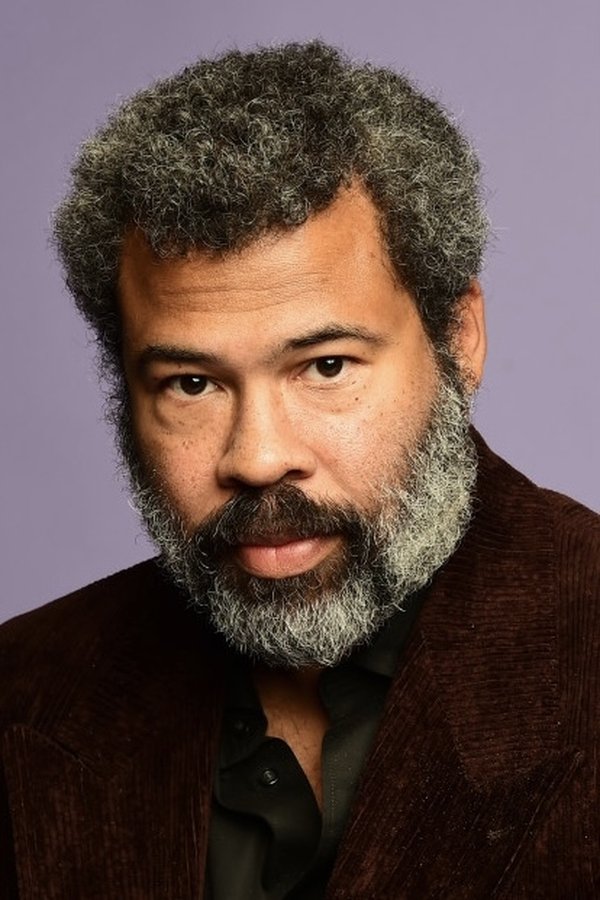
Jordan Peele
Director

Jordan Peele
Director

Daniel Kaluuya
Chris Washington
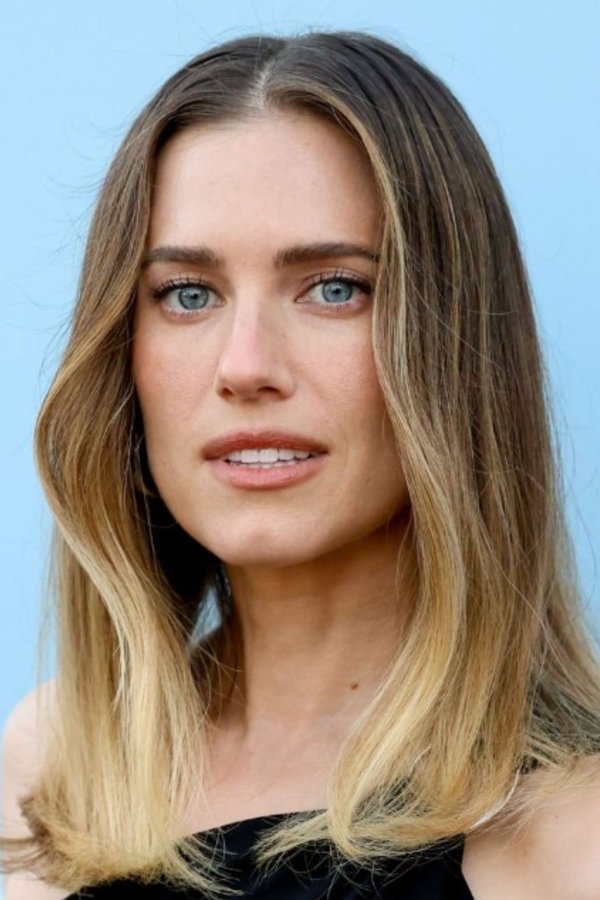
Allison Williams
Rose Armitage
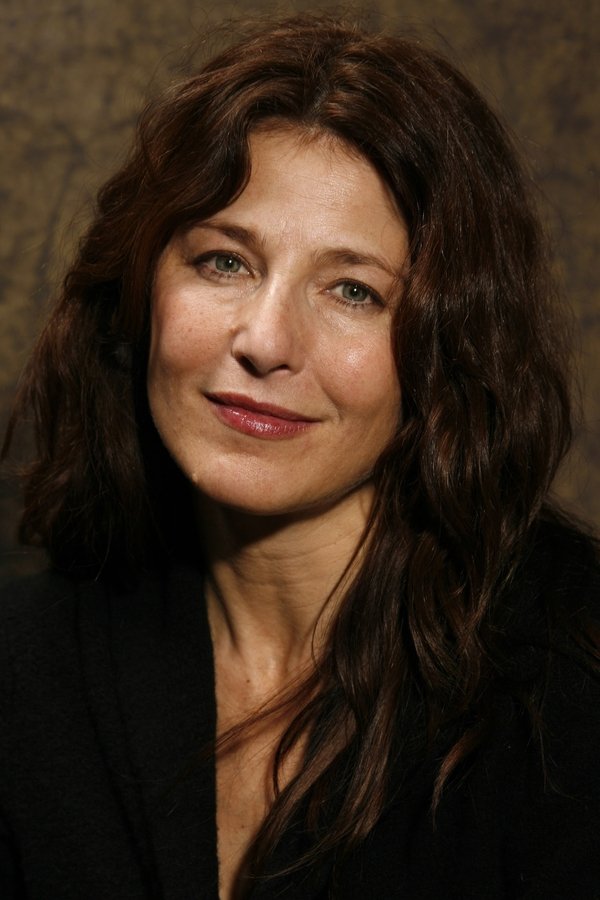
Catherine Keener
Missy Armitage
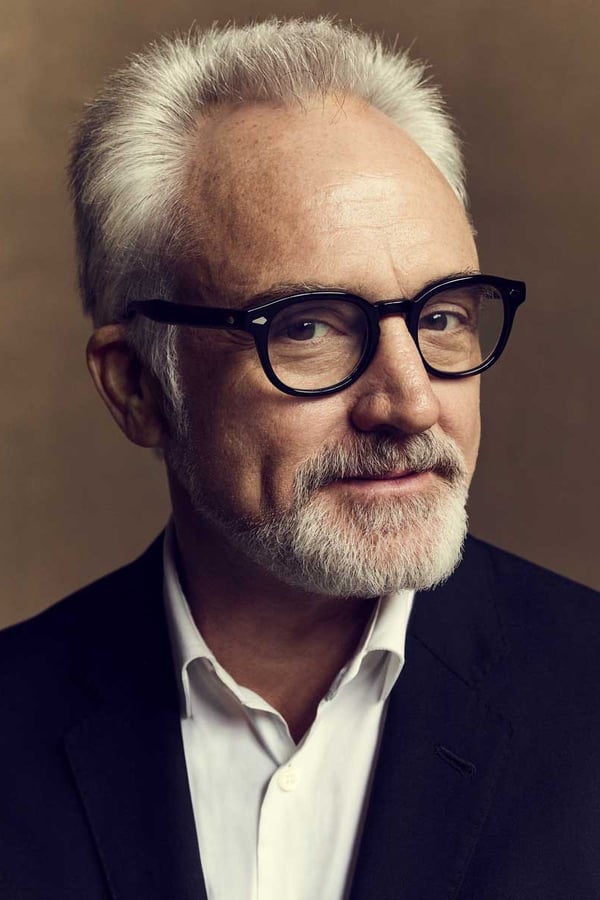
Bradley Whitford
Dean Armitage

Caleb Landry Jones
Jeremy Armitage

Marcus Henderson
Walter
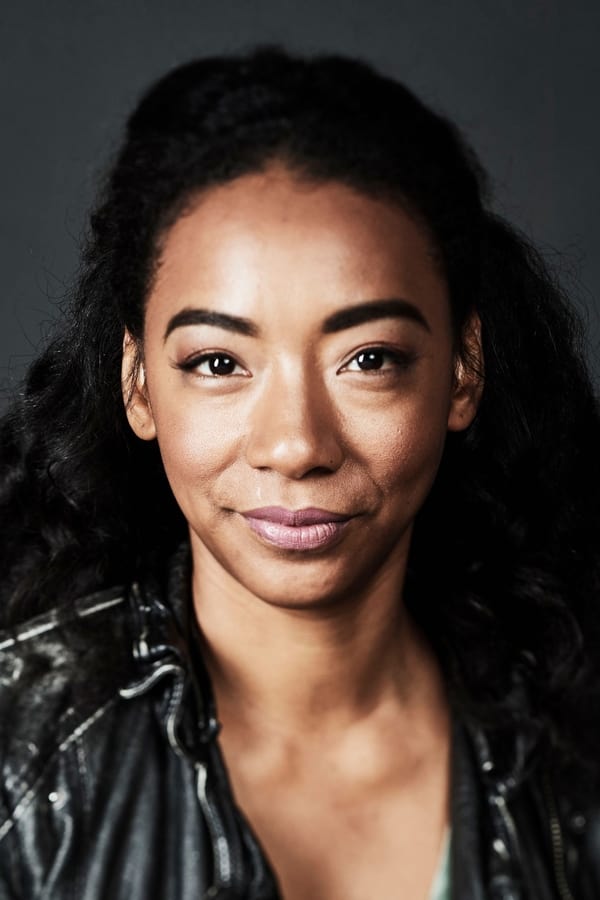
Betty Gabriel
Georgina
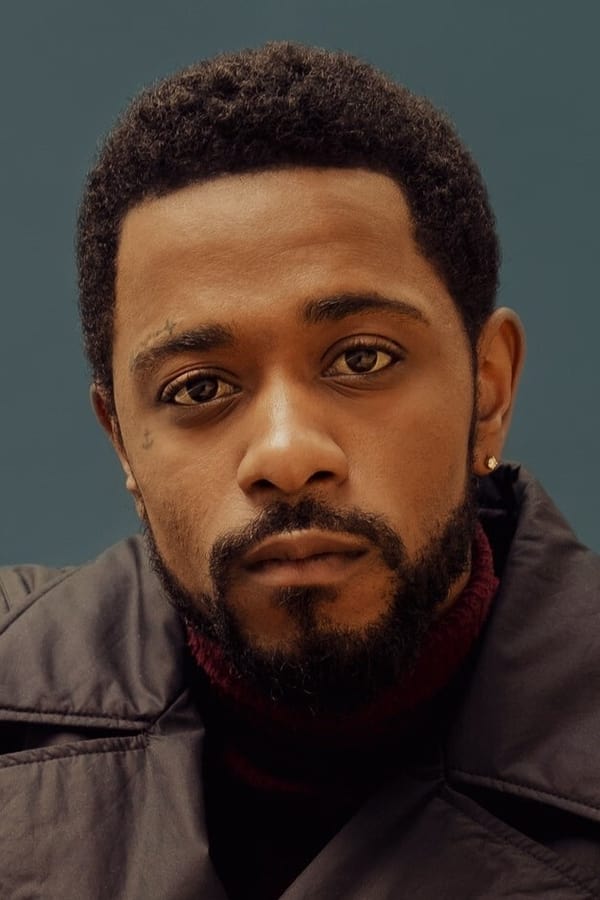
LaKeith Stanfield
Andre Logan King
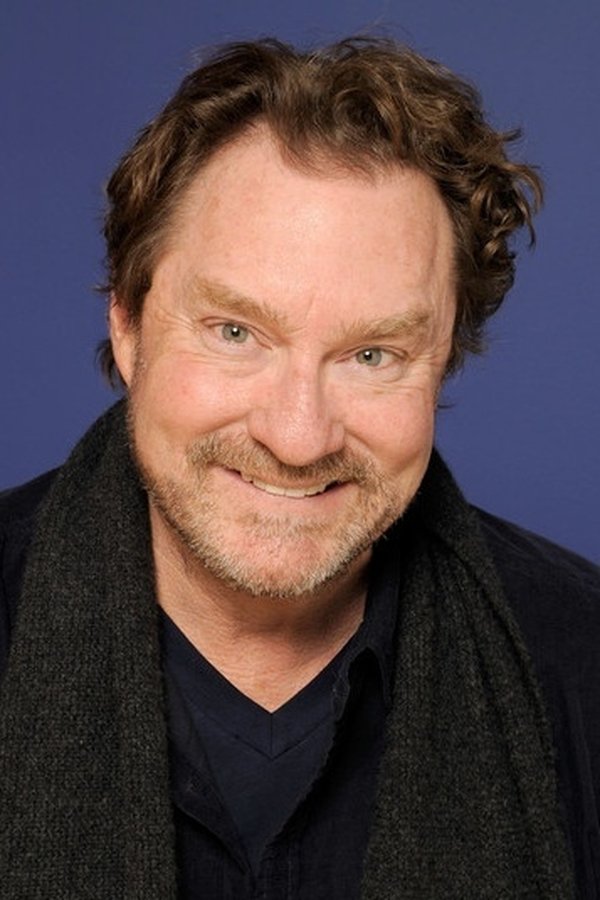
Stephen Root
Jim Hudson
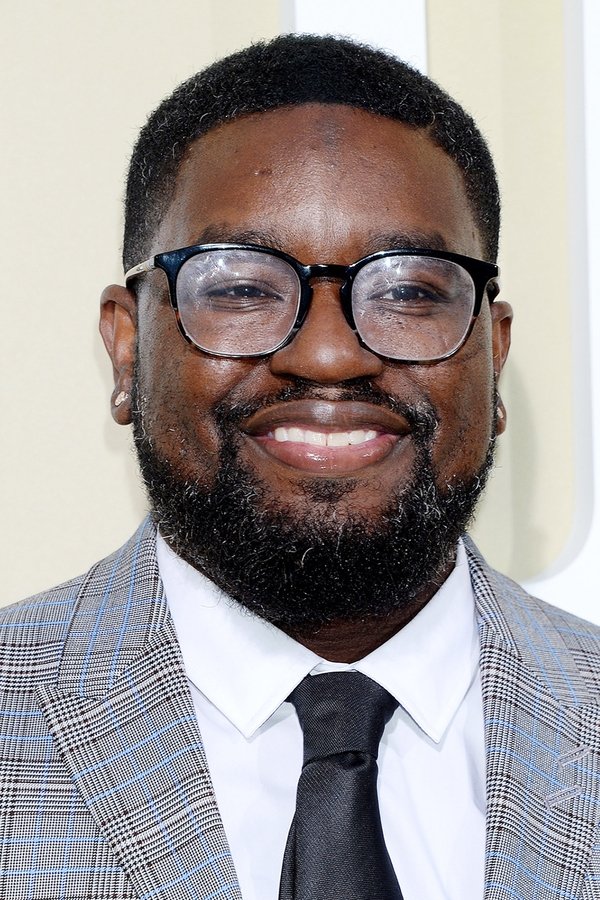
Lil Rel Howery
Rod Williams
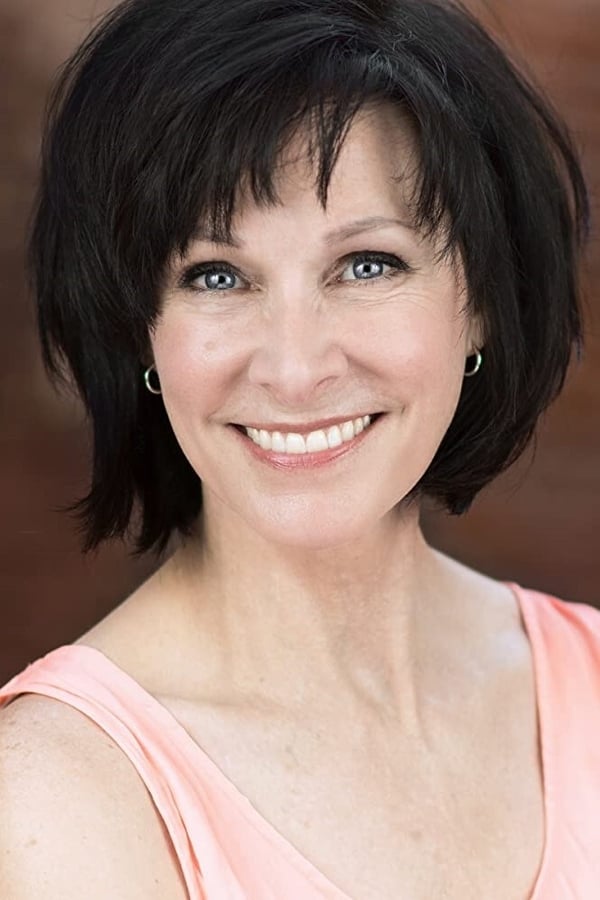
Ashley LeConte Campbell
Lisa Deets
A legacy based on the comic strip for old and new fans of Peanuts.
'Call Me Kate' is for the fans. It's an intimate account of an iconic film star.
Kung Fu Chit was a beautifully made, empowering short film that really spoke to me. Featured in Incluvie’s 2020 Film Festival, Kung Fu Chit tells the story of a girl who doesn’t quite fit in.



